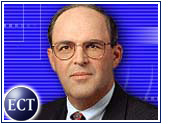Where will the online shoppers be in the next several years? Three separate Internet studies this week offer a glimpse.
Overall findings suggest buyers in the United States are, and will continue to be, predominantly white middle-class consumers. College campuses, many of which are melting pots of people from varied backgrounds, may provide a lucrative exception as they remain at the technological forefront. Internationally, the number of Internet users will more than triple over the next five years, but North America will no longer have the majority of users.
Perhaps the most eye-opening report this week — and surely fodder for the most political debate — is the U.S. Commerce Department’s new report, “Falling through the Net: Defining the Digital Divide.” While more Americans have access to telephones, computers and the Internet than ever before, the report found that the country’s demographic gap in technology access is widening.
More than 40 percent of all U.S. households have computers, and 25 percent have Internet connections. Upper class households, with annual incomes of $75,000 (US$) or more, are 20 times more likely to have Internet access and nine times more likely to have computers than families in the lowest income bracket. In addition, whites are more likely to have Internet access at home than blacks or hispanics are from home, work, school or elsewhere.
“America’s digital divide is fast becoming a ‘racial ravine’,” Assistant Secretary of Commerce for Telecommunications Larry Irving said. The Clinton administration, led by President Clinton himself, is trying to stem that tide by calling on the private sector to invest in computers and services for the needy. “It is now one of America’s leading economic and civil rights issues and we have to take concrete steps to redress the gap between the information haves and have nots,” Irving said.
Higher-tech Education
College students are gradually shifting into the “haves” group, according to a separate study by Greenfield Online. More than half of all U.S. college students will be able to surf the Internet from their wired dorm rooms or other residences this fall, and 84 percent will have access from some location on campus, Greenfield’s Pulsefinder On-Campus Market Study says.
The research firm concludes this increased access will directly translate to increased online shopping, particularly as more goods and services become available online. Twice as many students visited online shopping sites in the last school year as did the prior year, and 62 percent of those shoppers said they bought something. The top purchases among college kids are music CDs, despite the study’s finding that 50 percent of students have $100 or less in disposable income each month. About 13 percent have $25 or less. While online shopping is on the rise, more students with Internet access visit entertainment sites. Travel sites are a close third to shopping sites.
Higher-tech World
By 2003, as many as 350 million people around the world will use the Internet for travel, shopping and other services, according to the eGlobal Report by eMarketer. While it pioneered Internet use, North America is no longer the biggest online market, having lost its majority status in the first quarter of 1999.
However, the United States is expected to continue to generate the bulk of online shopping revenues over the next five years. eMarketer predicts worldwide e-commerce revenues will grow from $98.4 billion this year to $1.2 trillion by 2003. Following the United States in the shopping world will be Germany, which generates the second highest e-commerce revenues. That country spent $1.5 billion on online purchases in 1998 and is expected to spend $4.4 billion this year. The United Kingdom is close behind, spending $1.49 billion in 1998 and a projected $3.7 billion this year.
The largest growth area for Internet access will be South America, according to the report. With 4.1 million online this year, the continent will jump 550 percent to 26.6 million in 2002, eMarketer says.
The eGlobal Report is a compilation of data from hundreds of different sources, including Forrester Research, Intelliquest, Jupiter Communications, Dataquest, Datamonitor, Cyber Dialogue, IDC and international research firms such as Pro-Active and www.consult.






































Social Media
See all Social Media